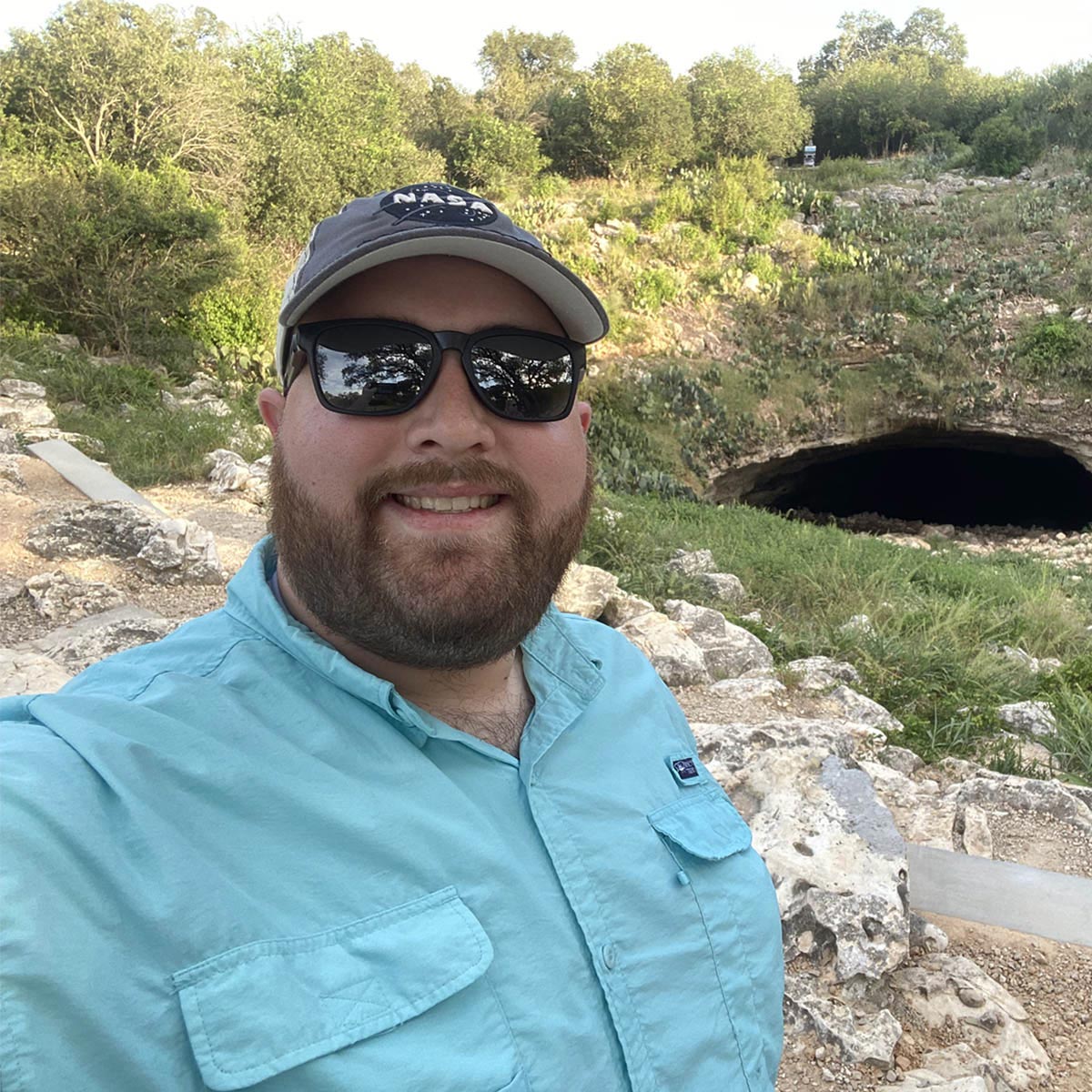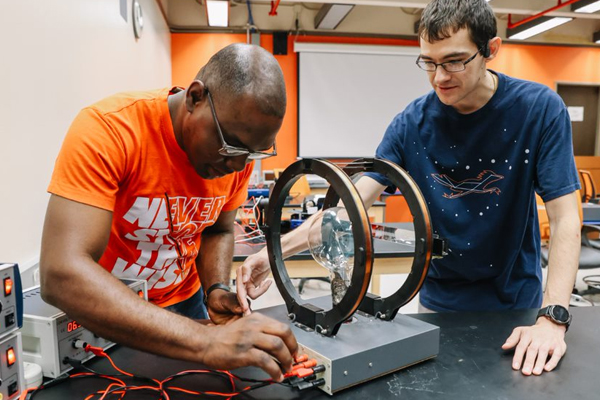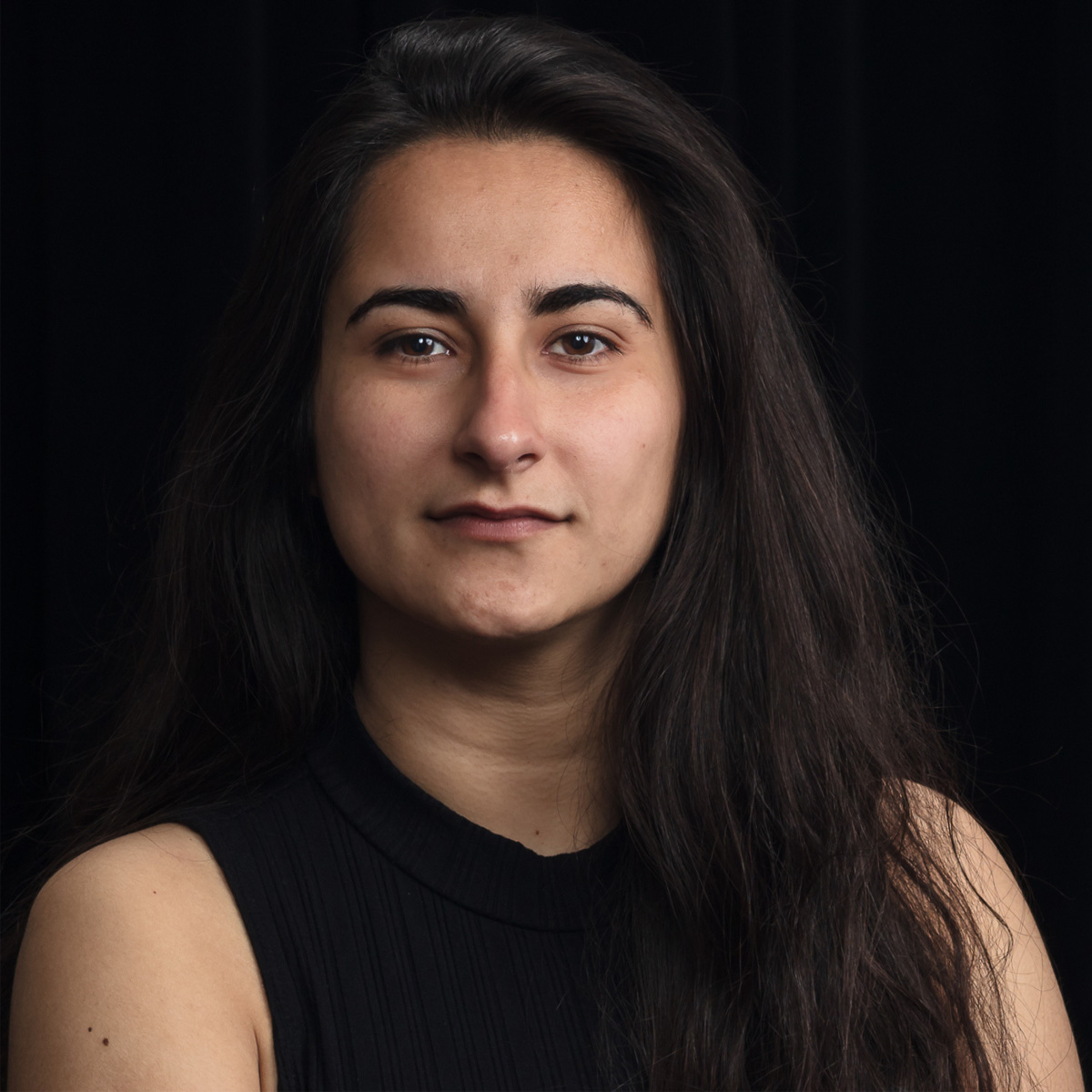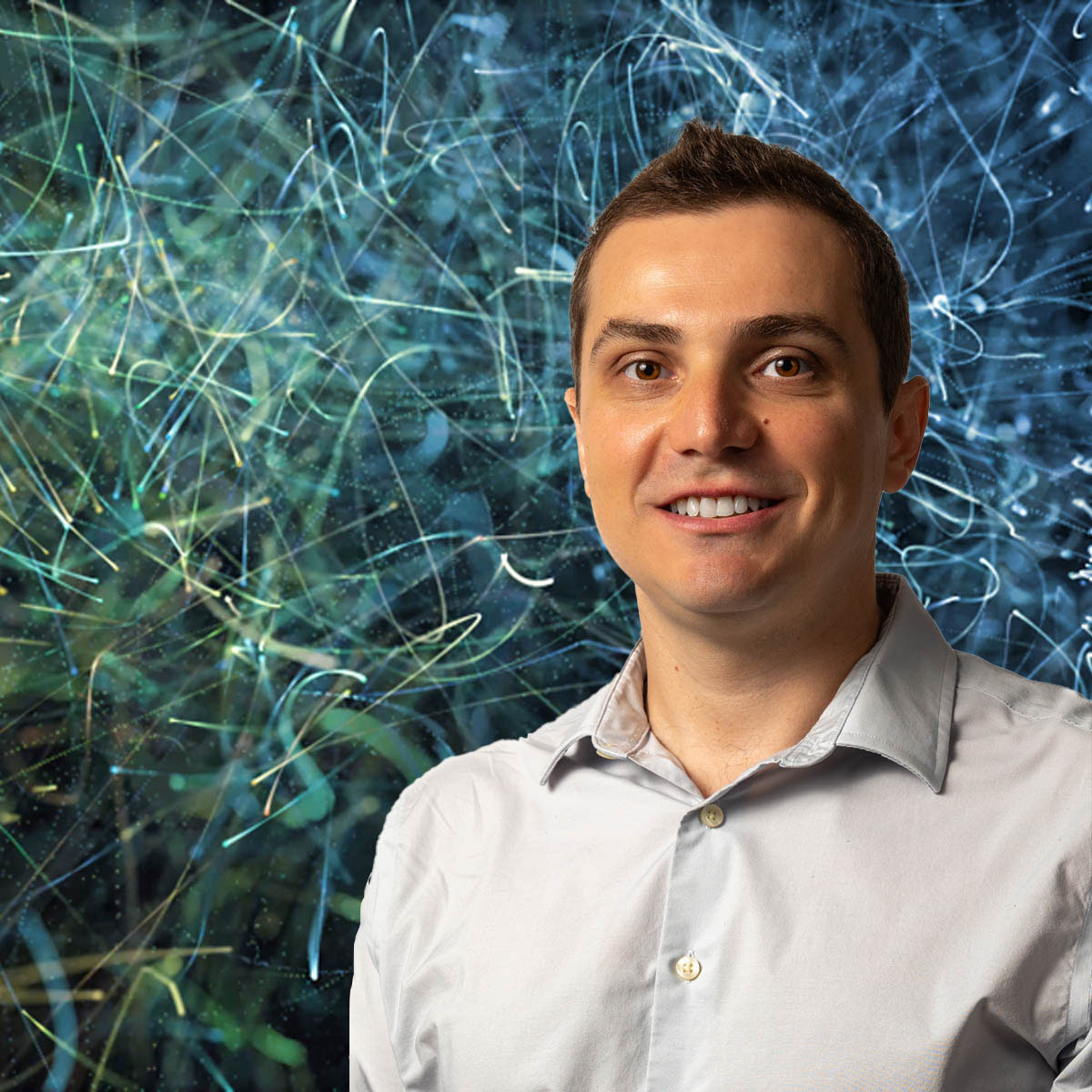Posted on August 11, 2025 by College of Sciences

Sean Michael Dillon, Physics Ph.D. Student
By Lauren Garza, Administrative Assistant
Sean Michael Dillon is a doctoral student from Los Molinos, California, pursuing a Ph.D. in physics. He grew up in a rural part of the state, where the stars lit up the night sky. In the evenings, he would stargaze—pointing out constellations and planets, dreaming of one day working for NASA to study the stars.
That passion led him to pursue physics at the University of California, Santa Cruz. There, he was inspired by one of his first physics professors, who worked with CERN, the European Organization for Nuclear Research, on the Large Hadron Collider—the world's most powerful particle accelerator.
"Seeing someone I knew working on something I had only seen on Cosmos or NOVA inspired me further and got me hooked on the field of astronomy," Sean said.
While searching for graduate schools, Sean received an email from UTSA promoting its physics and astronomy programs. Intrigued, he applied to the master's program and was accepted. What set UTSA apart, he said, was the research culture.
"The Department of Physics and Astronomy is still a relatively new program—this fall marks its 20th anniversary," Sean said. "In that time, we've helped make this university an R1 institution. The professors are always looking to expand their research groups. I've been to other universities as an undergrad, and none of them prioritized undergraduate research like UTSA."
Sean's current research focuses on modeling different grain shapes in radiative transfer (RT) models—tools that stimulate how light interacts with materials like dust in space. He uses these models to generate a spectral energy distribution of stars surrounded by dust. Most RT models assume that dust grains are spherical, but his research aims to question this assumption. He's still building the modeling program, but he's presented the preliminary results at multiple American Astronomical Society conferences.
Sean's advice to prospective graduate students comes from personal experience: "Pick an advisor you can fight. In any research group, you're going to butt heads with your advisor. It's important to challenge them and be challenged in return," he said. "If your advisor is too hard, it feels like you're doing their work. If they're too soft, there's no direction."
He considers himself lucky to work with Angela Speck, professor and chair of the Department of Physics and Astronomy. He said she has been incredibly supportive throughout his graduate journey—providing structure without overwhelming pressure. He credits her mentorship as a key reason he has stayed on track in his program.
Sean is expected to complete his Ph.D. in 2026 and hopes to become a professor. While his research is theoretical and doesn't rely heavily on equipment, it offers enough flexibility to work at institutions ranging from community colleges to R1 universities.
Sean also expressed gratitude for the staff behind the scenes. "Professors may be the face of the department, but it's people like Milly Herrera-Rosales, Belinda Tucker, and Jessica VanHooser-Sifuentes who keep everything running—handling paperwork, space, and student support," he said. "They're the backbone of the department. Without them, it would all fall apart. Thank you."

Explore the Physics and Astronomy Department!
Providing students with a solid background in physics and problem-solving skills and equipping them with invaluable research experience to prepare them for their future careers.
Recent Physics and Astronomy Spotlights
View More Spotlights
September 19, 2025
Maria Gabriela BoadaPublished by College of Sciences
#ThisIsWhatAScientistLooksLike



